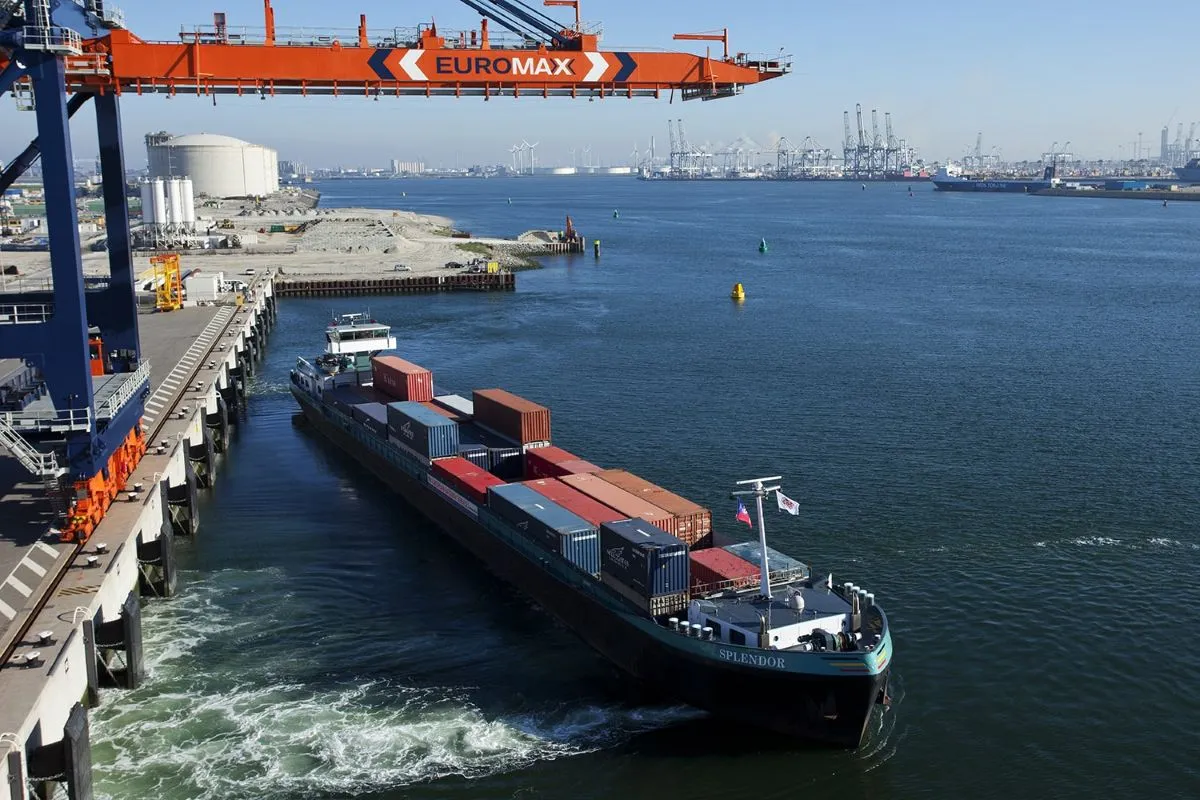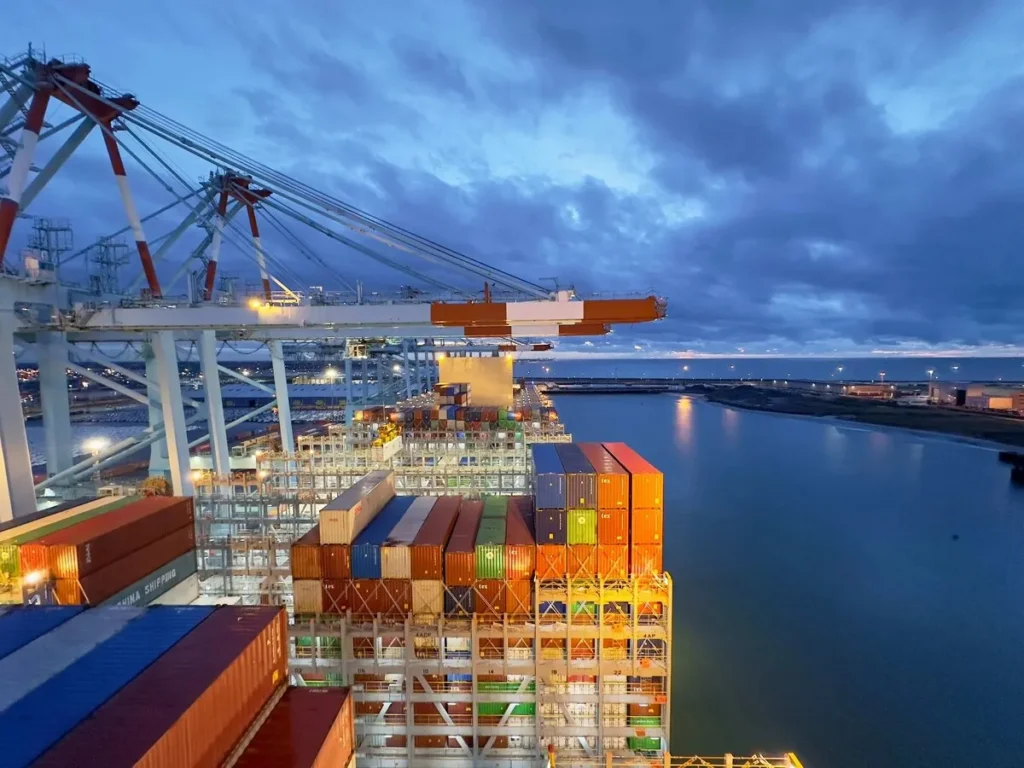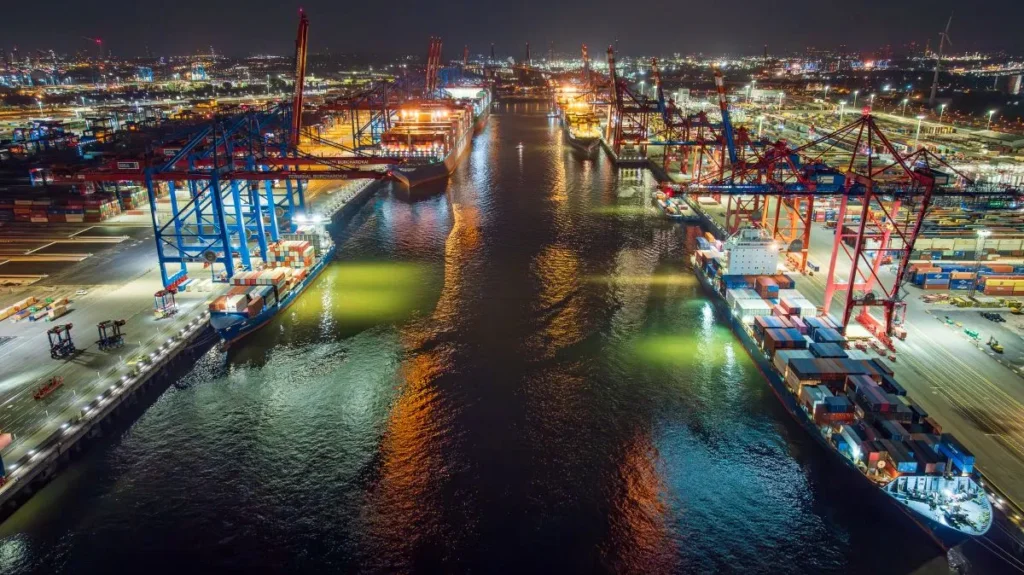Throughput at the Port of Rotterdam fell by 4.1% year-on-year in the first half of 2025, totalling 211 million tonnes. The decline was primarily driven by lower volumes in the dry bulk and liquid bulk segments, though container throughput rose in terms of TEUs, according to the latest results.
Dry bulk cargo volumes dropped by 8.9% to 32.3 million tonnes. Coal throughput saw the steepest decline, down 21.1%, primarily due to a sharp reduction in coking coal demand. Iron ore and scrap fell by 12.2% amid reduced activity in Germany’s steel sector. In contrast, agribulk volumes rose by 18.6%, driven by increased imports of oilseeds such as soy and rapeseed.
Liquid bulk throughput declined by 5.3% to 96.2 million tonnes. While crude oil volumes increased by 2.6%, mineral oil products fell significantly by 21.5%. LNG throughput rose by 9.0% as European gas stocks were replenished ahead of winter. Other liquid bulk volumes were down 5.9%, partly due to reduced biodiesel imports from China and declining palm oil usage in Europe.
Containers grow in volume, but drop in weight
The port handled 7.0 million TEUs in the first half of 2025; up 2.7% from the previous year. The increase was mainly due to higher consumer demand in Europe, with container traffic from Asia and North America rising by 8.4% and 9.1% respectively. However, container throughput in terms of tonnage dropped by 1.0% to 66.5 million tonnes, largely because of a rise in empty export containers and a 5% fall in full export boxes, reflecting the weak competitive position of European industry.
Breakbulk throughput grew by 1.3% to 16.0 million tonnes. RoRo volumes rose by 0.9%, while general cargo increased by 3.0%, supported by deliveries of offshore wind infrastructure and materials for the Porthos carbon capture project.
Financial results remain stable despite falling investments
The Port of Rotterdam Authority reported a 5.2% increase in revenue to €462.3 million in H1 2025, largely due to inflation-linked contract adjustments and a higher price per tonne in port dues. However, net profit fell by €4.7 million to €143.6 million, partly due to changes in IT cost accounting and the absence of one-off tax benefits seen in 2024.
Operating expenses rose by €19.4 million, driven by wage increases following a new collective labour agreement and higher indexed costs in existing contracts. EBITDA edged up by 1.1% to €295.0 million.
Investments dropped by 17% to €136.1 million compared with the same period in 2024. This decline is attributed to differences in project timing and a one-off purchase of nitrogen rights last year.
In case you missed it: Need EV chargers at your depot? Don’t miss this £1 million EV charging grant
North Sea neighbours share downturn in bulk volumes, diverge on container trends
The Port of Rotterdam’s 4.1% year-on-year decline in throughput during the first half of 2025 mirrors similar trends seen at the Port of Antwerp-Bruges, which also reported a 4.3% decrease in total cargo volumes to 137.2 million tonnes.
Both ports experienced steep declines in bulk cargo. Rotterdam’s dry bulk fell by 8.9% and liquid bulk by 5.3%, while Antwerp-Bruges reported even sharper drops of 11% in dry bulk and 17.1% in liquid bulk. In Antwerp-Bruges, the fall was mainly attributed to reduced volumes of fuels, naphtha, and LNG, whereas in Rotterdam, lower coal and mineral oil throughput were the primary drivers.
Read our in-depth article on the subject: Antwerp-Bruges volumes dip as bulk falls, congestion bites
Container volumes told a different story. Antwerp-Bruges saw container throughput rise by 3.7% in TEUs and 3.6% in tonnage to 6.91 million TEUs and 77 million tonnes, respectively. Rotterdam, by comparison, also reported growth in TEU terms (+2.7% to 7.0 million TEUs) but recorded a 1.0% drop in container tonnage to 66.5 million tonnes, largely due to an increase in empty outbound containers and weaker export volumes from European industry.
Further reading: This mistake could cost your haulage business €5,000. And Germany’s not messing around
RoRo traffic rose modestly at both ports—by 0.9% in Rotterdam and 1.4% in Antwerp-Bruges. However, Antwerp-Bruges was more strongly impacted by congestion and rising dwell times, with average terminal stays extending to 7–8 days.
In terms of trade trends, Antwerp-Bruges benefited from a 17.2% increase in trade with the United States, consolidating the US as its second-largest trading partner. Rotterdam similarly saw strong growth in transatlantic traffic, with a 9.1% increase in container volumes to and from North America following changes in alliance structures.
Despite differing operational pressures, both ports highlighted the need for improved infrastructure, digital coordination, and industry investment to ensure resilience amid geopolitical and economic uncertainty.








